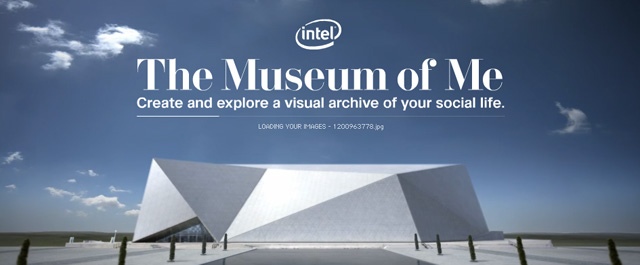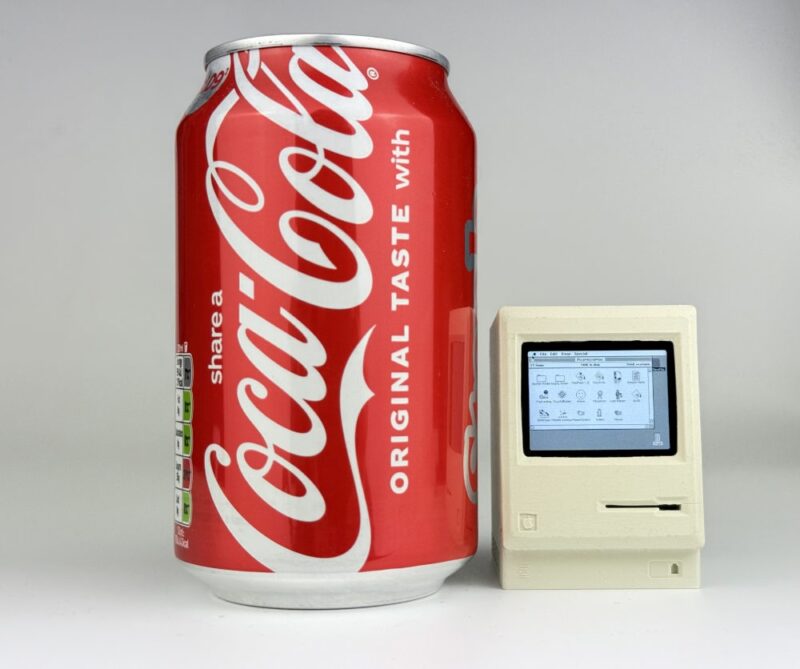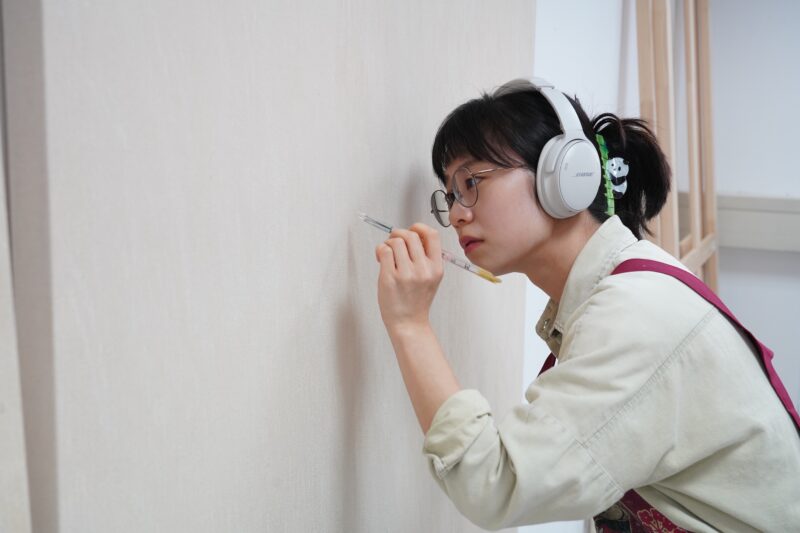Over the last decade or so, the burgeoning culture industry has spawned museums at such a rate that it seems no small town or minor artist will be left unrepresented. Now, social media has taken that logic to its absurd conclusion: it is not just minor artists who will get their own museum, we all will. Or so the creators of the Museum of Me would have us believe. Launched last year, and last week named the FWA (Favourite Website awards) site of the year, the Museum of Me turns your Facebook profile into a virtual exhibition. It sounds cheesy (and it is), but the fact that it already has more than 850,000 “likes” confirms that you can’t underestimate the public’s self-obsession.
The site, designed by Japanese agency Projector, takes the 19th-century concept of the museum as edifying repository and turns it into a characteristically 21st-century memorial to the self. Entering this generically deconstructivist building, what you get is a fly-through animation of a series of galleries, with pictures of you and your friends on the walls. There is a random selection of status updates jumbled on screens, and then a final sequence that implies, erroneously, that you are merely a composite of your social network. A soaring soundtrack turns the sentimentality dial to max. The experience is a cross between a photo album, a phonebook and a funeral. Not until the very end do you realise that it was all just an ad: “Intel Core i5. Visibly Smart”.

The Museum of Me is a deft piece of marketing by microchip maker Intel. Given the opportunity to see how your life looks splashed on a museum’s walls, you’d have to be the uncurious type not to have a peek. You can see why it went viral. But Intel doesn’t sell directly to consumers, so what does it get out of this? Brand awareness, clearly, but also an opportunity to demonstrate that it is the purveyor of new experiences. And that’s where it gets interesting: the Museum of Me may be a disposable gimmick, but Intel spends a good deal of time imagining what the future of our everyday experiences will look like. It has to. Making a microchip takes between three and seven years. Chips can’t be designed to run gadgets we already own, or to satisfy observable consumer behaviour: they have to be designed for a market that doesn’t yet exist.
“Our job is to think five years ahead, or beyond,” says Wendy March, senior designer at Intel’s department of interaction and experience research. “Technology changes so rapidly, and what’s next on the horizon is sometimes closer than you think.” As a result, Intel sponsors some of the most speculative research in design today. Working with design schools across the world, it sets students the task of dreaming up future scenarios – no matter how implausible they might seem.

One school the company has a longstanding relationship with is London’s Royal College of Art. In recent years it has sponsored research by Intel’s interaction design department into such topics as the future of money and the use of robots in the domestic environment. In a cashless society, what rituals would we devise to make money tangible? How would we communicate with our robots? One student envisaged a “swab-bot” that roams the house doing hygiene tests and leaving you notes about your unsatisfactory cleanliness. “It’s not about, ‘Here’s an idea, let’s make that.’ It’s more about expanding our thinking,” says March.
The RCA group’s current research is into the future of social computing. This isn’t just about social media and our insatiable appetite for sharing our personal lives. Social computing also allows asthma sufferers, for instance, to share information about air quality and their medication use, revealing patterns that will help improve their future treatment. “We’re accumulating more and more data – but what do we do with it?” says March. “How do we stop it going into the digital equivalent of the cupboard under the stairs?”
Students at the RCA are finding various uses for it. One has designed an app that plays a soundtrack related to the crime figures for different areas of London, giving you an atmospheric sense of how safe you are, statistically, as you walk through the city. Another has documented all the posters at the Occupy site so that they can be shared digitally when they disappear (the British Library is interested in making it part of its collection). Other ideas are more speculative: for instance, turning social housing blocks into human supercomputers or hive minds, gathering the so-called wisdom of crowds.
This kind of research is not about plugging a gap in the market, but about enabling students to think beyond the narrowness of tech products. “It’s useful because it shows the students there is another way of working with industry that’s not about products,” says Tony Dunne, the RCA’s professor of design interactions. “Instead they can be involved upstream, even challenging a company’s own ideas, using story-telling, speculation and social observation.” With a company like Intel this is particularly interesting: as computing becomes ubiquitous, microprocessors are not just for gadgets but are increasingly woven into the fabric of everyday life. As William Gibson put it a decade ago, “I very much doubt that our grandchildren will understand the distinction between that which is a computer and that which isn’t.”
guardian.co.uk © Guardian News & Media Limited 2010
Published via the Guardian News Feed plugin for WordPress.








